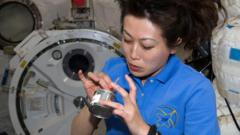In the shadows of Iceland’s geothermal power hub lies a groundbreaking indoor facility run by Vaxa Technologies, a game-changer in food production. Here, under a distinctive pink and purple glow, towering photo-bioreactors and bubbling water columns cultivate microalgae, a lesser-known but highly nutritious food source.
General manager Kristinn Haflidason describes Vaxa as embodying “a new way of thinking about food production.” Traditionally, humans have relied on macroalgae, such as seaweed, for sustenance, but microalgae—despite being consumed by civilizations as far back as ancient Central America and Africa—has had a more limited footprint in modern diets. Recently, its potential as a sustainable and nutrition-rich source is driving innovation among scientists and entrepreneurs.
Located about 35 minutes outside Reykjavik, the Vaxa facility specializes in the production of the microalgae Nannochloropsis, catering both to human consumption and serving as feed for aquaculture pursuits. Additionally, it cultivates Arthospira, commonly known as spirulina, which is touted for its dietary benefits and vibrant coloration.
In a unique convergence of technology and sustainability, Vaxa leverages energy and resources from the nearby geothermal power station for algae growth, utilizing excess carbon dioxide from the facility while employing renewable electricity and heating solutions for cultivation. As Asger Munch Smidt-Jensen of Denmark's Technology Institute explains, the operation results in a “slightly negative carbon footprint” along with reduced land and water usage.
The operation relies heavily on artificial light and machine learning to optimize growth conditions. With plans for expansion, Vaxa can currently produce about 150 metric tonnes of algae per year, with about 7% of the crop harvested daily—a testament to its rapid replenishment.
High in protein, carbonhydrates, omega-3 fatty acids, and vitamin B12, microalgae could serve as a significant player in addressing global food insecurity—a notion bolstered by predictions that the microalgae market could exceed $25 billion by 2033. Several startups, like the Danish Algiecel, are also exploring similar innovative solutions that integrate food production with carbon capture.
Despite the optimistic outlook, experts highlight several challenges before microalgae can become a household staple. Munch Smidt-Jensen notes that while their nutritional profile is robust, texture and taste issues present barriers to widespread adoption. Malene Lihme Olsen, a food scientist, echoes this sentiment, emphasizing the necessity for additional research to enhance digestibility and acceptance of microalgae in daily diets.
For now, the harvested product resembles an unremarkable green sludge, but as Haflidason explains, this does not reflect its true potential. Instead, processed forms of microalgae can enrich everyday foods, such as smoothies and baked goods, enhancing their nutritional value without altering familiarity.
While substantial hurdles remain in the integration of microalgae into mainstream diets, its sustainable production model in Iceland demonstrates a promising path toward revolutionizing global food systems.





















